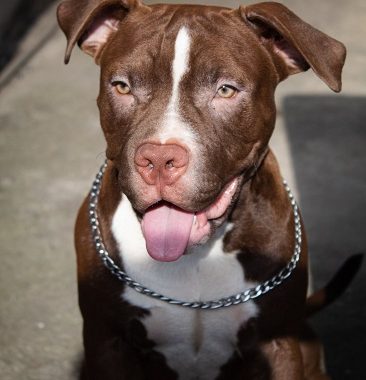
As our beloved pets age, their activity needs and capabilities change. Just like humans, senior pets require special attention and consideration when it comes to exercise.
Regular physical activity is crucial for maintaining their overall health and well-being, but it’s important to tailor their exercise routines to accommodate their age-related limitations.
In this article, we’ll explore the do’s and don’ts of exercise for your aging pet to ensure they stay happy, healthy, and comfortable in their golden years.
The Do’s:
-
Consult Your Veterinarian:
Before embarking on an exercise plan for your aging pet, prioritize consulting your veterinarian for tailored guidance. Veterinary professionals play a crucial role in assessing your pet’s overall health, identifying potential underlying issues, and offering personalized recommendations.
Their expertise allows them to consider your pet’s unique needs, taking into account factors like breed, size, and existing health conditions.
This proactive approach ensures that the exercise regimen is not only beneficial but also safe, minimizing the risk of exacerbating any pre-existing health concerns.
Regular check-ins with your veterinarian create a collaborative effort to enhance your aging pet’s well-being through a carefully curated and individualized exercise routine.
-
Low-Impact Activities:
Low-impact activities are ideal for senior pets, focusing on preserving joint health while promoting overall well-being. Swimming provides a non-weight-bearing exercise, relieving pressure on joints and enhancing flexibility.
Short, leisurely walks contribute to maintaining muscle tone and cardiovascular fitness without causing excessive strain. Controlled play sessions, incorporating interactive toys and gentle movements, engage your pet mentally and physically.
These activities are essential for aging animals, ensuring they stay active and healthy while minimizing the risk of joint discomfort or injuries associated with high-impact exercises. Always tailor the intensity and duration of these activities to your pet’s individual needs, guided by your veterinarian’s advice.
Best Training Techniques for Senior Dogs
-
Regular, Gentle Walks:
For senior pets, incorporating regular, gentle walks into their routine is highly advantageous. Instead of a single prolonged session, opt for multiple short walks throughout the day.
This approach minimizes the risk of fatigue, catering to their reduced stamina. Short walks also contribute to mental stimulation, keeping your senior pet engaged and satisfied.
As they explore their surroundings in bite-sized increments, it not only aids physical well-being but also supports cognitive health, fostering a balanced and fulfilling daily experience for your aging companion.
Extra Large Pet Training and Puppy Pads Pee Pads for Dogs
-
Modified Playtime:
When engaging in playtime with your aging pet, adapt activities to suit their physical capabilities. Opt for softer toys to prevent dental problems and minimize the impact on aging teeth.
Choose games that steer clear of excessive jumping or abrupt movements, as these can strain joints and lead to discomfort.
By modifying playtime, you ensure that your senior pet can enjoy interactive sessions without putting undue stress on their body, promoting both physical and mental well-being.
Remember, the goal is to provide engaging and enjoyable activities that are gentle and tailored to your pet’s age-related limitations.
Dog Balance Disc Cushion 14″ – With 2 Exercises and Pump
-
Joint Supplements:
Joint supplements, such as glucosamine and chondroitin, are beneficial additions to your aging pet’s diet.
As advised by your veterinarian, these supplements play a crucial role in maintaining optimal joint health and can alleviate discomfort associated with arthritis.
They work by promoting cartilage repair and reducing inflammation, enhancing your pet’s mobility and overall comfort.
Regular administration, according to your vet’s guidance, ensures that your senior pet receives the necessary support to counteract the natural wear and tear on their joints, fostering a more active and pain-free lifestyle as they gracefully age.
-
Age-Appropriate Activities:
To cater to your aging pet’s specific needs, consider their age and breed when selecting activities. Senior dogs often appreciate a relaxed stroll, promoting joint mobility and mental stimulation.
Meanwhile, older cats may thrive on interactive toys that stimulate their senses, offering mental engagement without imposing excessive physical strain.
Cats, known for their agility, benefit from activities that tap into their natural instincts, such as puzzle toys or feather wands. Always observe your pet’s response and adapt activities accordingly to ensure they enjoy age-appropriate stimulation and maintain their overall well-being.
Positive Training for Aggressive and Reactive Dogs Book
The Don’ts:
-
Overexertion:
Overexertion poses a significant risk to your aging pet’s well-being. Pushing them beyond their physical limits can result in fatigue, leading to muscle strain and potential exacerbation of existing health problems.
Seniors may lack the stamina of their younger counterparts, making it crucial to strike a balance between maintaining activity and preventing undue stress.
Recognize signs of fatigue during exercise, such as labored breathing or reluctance to continue, and adjust their routine accordingly. Prioritizing gentle, tailored workouts and closely monitoring their responses ensures a safe and enjoyable exercise experience, promoting their overall health and longevity.
Best Reusable Dog Training Pads
-
High-Impact Activities:
High-impact activities, like vigorous running and jumping, should be avoided for aging pets. These actions put undue stress on their joints, increasing the risk of injuries and potentially worsening arthritis symptoms.
The impact of these activities can contribute to joint degeneration and discomfort. Opt instead for low-impact exercises, focusing on gentle walks and controlled play to maintain cardiovascular health without compromising their well-being.
Regular monitoring and adjustment of their exercise routine will ensure a balance between staying active and safeguarding your pet from unnecessary strain on their aging joints.
-
Inadequate Warm-Up:
Adequate warm-ups are crucial for your aging pet’s well-being. Before embarking on any physical activities, prioritize a proper warm-up routine. Gentle stretching and slow-paced walks play a pivotal role in preparing your pet’s muscles and joints for increased activity.
This preliminary warm-up is essential for enhancing flexibility, promoting circulation, and minimizing the risk of injuries.
By incorporating these deliberate warm-up measures into your pet’s exercise regimen, you contribute to their overall comfort and ensure that their aging bodies are adequately prepared for the activities that follow, promoting a safer and more enjoyable experience for your senior companion.
-
Neglecting Signs of Discomfort:
Neglecting signs of discomfort in your aging pet can lead to more significant health issues. Watch for subtle cues like limping, stiffness, or reluctance to move during or after exercise.
If observed, promptly adjust their exercise routine to alleviate stress on joints and muscles. Consulting your veterinarian is crucial; they can provide insights into potential underlying issues, recommend modifications to the exercise regimen, or suggest additional measures like joint supplements.
Early intervention ensures your pet’s comfort, preventing the progression of discomfort into more severe conditions and contributing to their overall well-being in their senior years.
-
Ignoring Weight Management:
Ignoring weight management in senior pets can have detrimental effects on their overall well-being. Excess weight places undue stress on their joints, heightening the risk of arthritis and mobility issues. Consulting your veterinarian is vital for tailoring a suitable diet and feeding plan.
They can provide guidance on calorie intake, recommend age-appropriate nutrition, and monitor weight fluctuations. Proactive weight management not only enhances your pet’s comfort but also reduces the likelihood of obesity-related health issues, ensuring a healthier and more active lifestyle in their golden years.
-
Skipping Regular Check-Ups:
Regular veterinary check-ups are a cornerstone of responsible pet care for senior animals. These appointments, typically scheduled at least twice a year, provide crucial insights into your aging pet’s overall health.
Veterinarians use these check-ups to perform comprehensive physical examinations, assess vital signs, and conduct routine screenings.
Early detection of health issues, such as arthritis, dental problems, or organ dysfunction, enables timely intervention, preventing the escalation of conditions that could compromise your pet’s well-being.
Consistent check-ups also facilitate the adjustment of exercise routines and dietary plans tailored to your pet’s changing needs, ultimately contributing to a healthier and happier life in their golden years.
Conclusion:
As our furry friends age, their exercise needs change, requiring a thoughtful and tailored approach.
By following the do’s and don’ts outlined above and collaborating closely with your veterinarian, you can provide your aging pet with the appropriate level of physical activity to keep them happy, healthy, and comfortable in their later years.
Regular attention to their well-being and adjustments to their exercise routine will contribute to a fulfilling and enjoyable life for your senior pet.
Further Reading:
How To Exercise Your Senior Dog
Tips to Get Out With Your Older Dog
FAQs:
Should I exercise my old dog?
Yes, it’s crucial to exercise your old dog, but with consideration for their age and health. Low-impact activities like short walks and gentle play maintain muscle tone without straining joints. Regular, modified exercise helps prevent obesity and promotes mental stimulation. Consult your veterinarian for tailored advice based on your dog’s specific needs and health conditions. Adequate exercise supports cardiovascular health and joint function, contributing to an overall better quality of life for your senior canine companion. Always monitor your dog for signs of discomfort during and after exercise, adjusting their routine accordingly. Regular veterinary check-ups ensure a holistic approach to their well-being.
�
How do I deal with my pet aging?
- Regular Veterinary Check-ups: Schedule routine check-ups to monitor your pet’s health and address potential issues early on.
- Tailored Exercise: Adjust exercise routines to accommodate your pet’s changing abilities, focusing on low-impact activities.
- Balanced Diet: Consult your veterinarian for a senior-specific diet to address nutritional needs and weight management.
- Joint Supplements: Consider joint supplements to support aging pets and manage conditions like arthritis.
- Comfortable Environment: Provide a comfortable living space with soft bedding and easy access to essential areas.
�
How can I improve my senior pet’s quality of life?
To enhance your senior pet’s quality of life, prioritize regular veterinary check-ups for early issue detection. Adjust their diet to meet changing nutritional needs and maintain a healthy weight. Provide low-impact exercises like short walks to keep them active without straining joints. Incorporate comfortable bedding and easy access to water to accommodate potential mobility issues. Offer mental stimulation through interactive toys and activities. Consider joint supplements as recommended by your vet. Lastly, shower them with love and attention, ensuring a supportive and affectionate environment as they age.
�
How often should you exercise your pet?
The frequency of exercise for your pet depends on factors like age, breed, and health. Generally, dogs benefit from daily walks, ranging from 30 minutes to two hours, depending on breed and energy level. Cats should engage in interactive play sessions several times a day. Senior pets may require shorter, more frequent activities. Consult your veterinarian to tailor an exercise routine suitable for your pet’s individual needs. Pay attention to their behavior – if they seem restless or lethargic, adjustments may be necessary. Remember, quality and consistency are key for maintaining your pet’s overall well-being.
